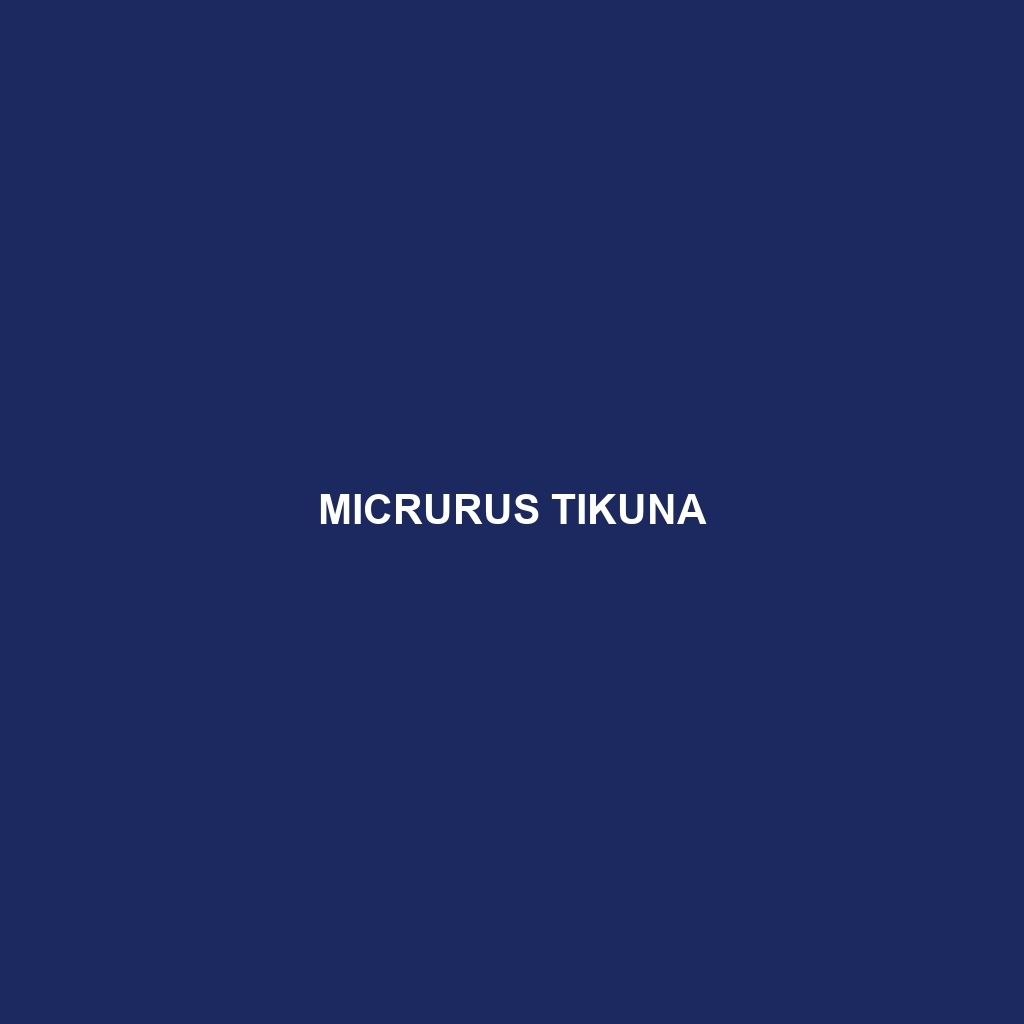Common Name
Micrurus tikuna
Scientific Name
Micrurus tikuna
Habitat
The Micrurus tikuna, commonly known as the Tikuna Coral Snake, is primarily found in the tropical rainforests of South America, especially in the regions of northern Brazil, Peru, and Colombia. This striking snake favors humid, dense jungle environments, where it resides among leaf litter and underbrush, allowing it to remain hidden from both predators and its prey. The species is adapted to warm, moist climates and is often located near freshwater bodies, which provide both a drinking source and a breeding ground. In addition to rainforests, Micrurus tikuna may also inhabit nearby savannas and temperate forests, showcasing its adaptability to various microhabitats within the tropical ecosystem.
Physical Characteristics
Micrurus tikuna exhibits remarkable physical characteristics that set it apart from other species in its family. Adult Tikuna Coral Snakes typically reach lengths of 50 to 90 centimeters (20 to 35 inches) and have a slender, elongated body. Their coloration is one of their most distinctive features, sporting vibrant bands of red, black, and yellow. The unique patterning is not only visually striking but serves as a warning to potential predators about their venomous nature. A notable characteristic is their small heads, which are often in proportion to their slender body, and they possess a set of hollow fangs that enable them to effectively deliver venom when they bite.
Behavior
The behavior of Micrurus tikuna is particularly intriguing, as these snakes are primarily nocturnal, emerging during the night to hunt for prey. They display a solitary nature except during mating season when males may be observed engaging in combat rituals to establish dominance. Their predatory tactics include ambushing their prey, relying on their camouflage to blend seamlessly into the rainforest environment. While they are not known to migrate long distances, these snakes can exhibit local movements to track food availability. Micrurus tikuna is a secretive species, making sightings rare and highly valued by herpetologists.
Diet
Micrurus tikuna is a carnivorous species, primarily feeding on other reptiles, amphibians, and small mammals. Its diet consists mainly of lizards and frogs, which provide the necessary nutrients for their growth and development. The Tikuna Coral Snake employs a method of envenomation to subdue its prey, delivering potent neurotoxic venom that immobilizes its victims almost instantly. Feeding typically occurs at night, aligning with their nocturnal hunting habits. The snake’s ability to successfully hunt and consume larger organisms showcases its role as a significant predator in its ecosystem.
Reproduction
The reproduction of Micrurus tikuna occurs during the warmer months of the year, with mating typically taking place from late spring to early summer. Following a gestation period of about 60 to 70 days, females give birth to live young, with litter sizes ranging from 5 to 15 offspring. The newborn snakes are approximately 20 centimeters (8 inches) long and possess a similar banding pattern to that of adults, providing them with camouflage in their natural habitat. After birth, the young are independent and begin hunting for small prey shortly after they emerge. Parental care is minimal, with no further interaction between the mother and her offspring post-birth.
Conservation Status
As of the latest assessments, Micrurus tikuna is classified as a species of “Least Concern” according to the IUCN Red List. However, habitat destruction due to deforestation and agricultural expansion poses significant threats to their natural environments. Conservation efforts aimed at preserving their rainforest habitats are essential to maintaining healthy populations. Educating local communities about the ecological importance of these snakes can further aid in their conservation. Continued research and monitoring are necessary to ensure that Micrurus tikuna remains resilient in the face of environmental changes.
Interesting Facts
One of the fascinating aspects of Micrurus tikuna is its mimicry with non-venomous snakes, which can confuse potential predators. This mimicry allows them to exist in areas heavily populated by both prey and competitors. Furthermore, their venom is among the most potent of any snake species, with a neurotoxic bite that can lead to paralysis in their prey. Despite their deadly capabilities, these snakes are extremely shy and rarely engage humans unless threatened, making them fascinating creatures that play a vital role in the biodiversity of their ecosystems.
Role in Ecosystem
Micrurus tikuna serves as a critical predator in the ecosystems it inhabits, helping maintain the balance between species populations. By controlling the numbers of small reptiles and amphibians, it contributes to the overall health of the rainforest ecosystem. This species also plays an important role in the food web, serving as prey for larger birds and mammals. As a keystone species, the Tikuna Coral Snake’s presence is indicative of a robust and thriving ecosystem that supports a wide variety of life. Protecting such species is essential for overall biodiversity and ecological health.
